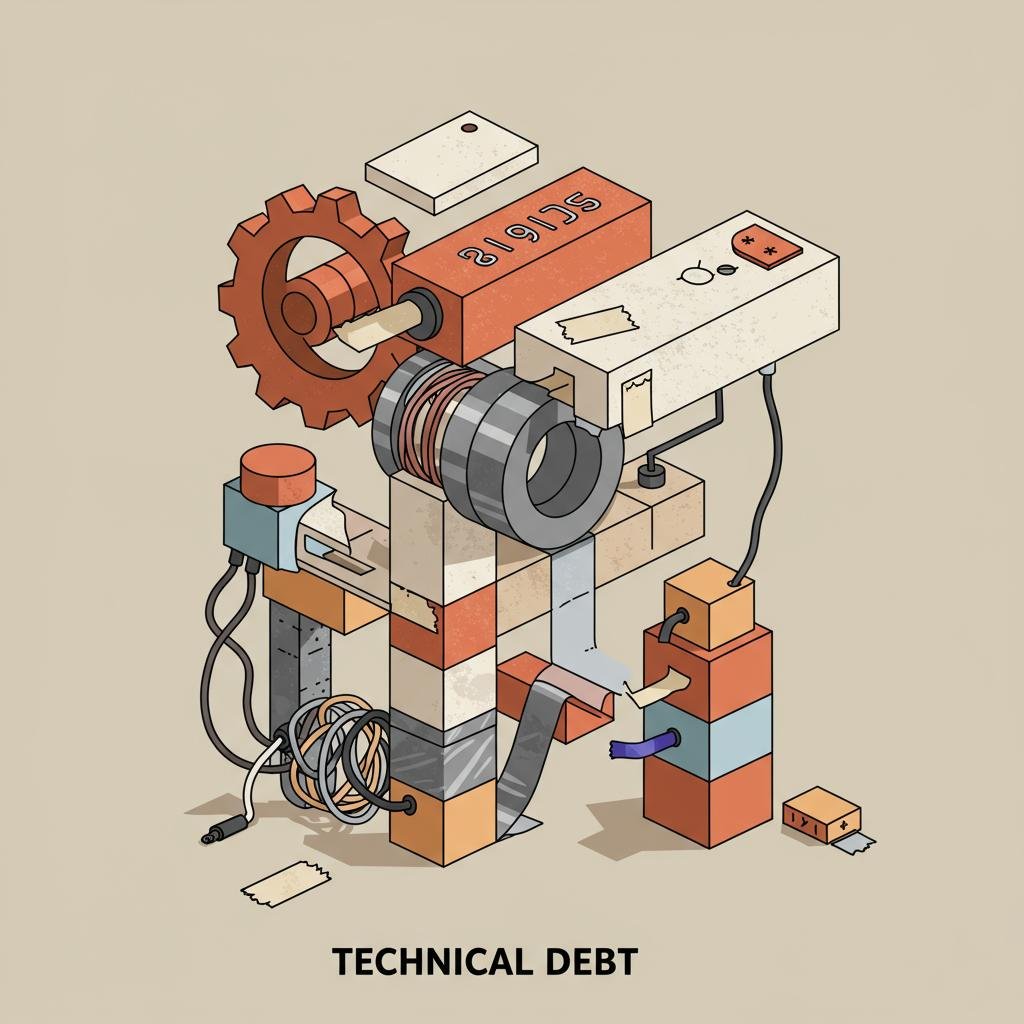The Breaking Point: 5 Signs Your Business Model Can't Scale
July 5, 2025

Rapid growth often exposes critical flaws in your operational foundation, leading to chaos and stagnation. This article reveals the five tell-tale signs that your business is hitting a scaling wall, from manual process overload to data fragmentation. Learn to identify these warnings before they demand costly rebuilds and discover how a production-ready approach can secure your future.
From High-Growth to Gridlock: Is Your Success Becoming Your Biggest Problem?
Every founder dreams of the moment when growth accelerates. But what happens when the systems that got you here suddenly become the anchors holding you back? That initial hustle, fueled by spreadsheets and manual workflows, inevitably hits a breaking point. Suddenly, your team is drowning in manual work, your data is a chaotic mess, and every new customer adds more strain than revenue.
This isn’t just a growing pain; it’s a critical flaw in your operational DNA. Ignoring these symptoms leads to a predictable and expensive fate: frustrated customers, burnt-out employees, and a complete system overhaul that drains resources and stalls momentum. The key isn’t just to grow, but to build a foundation that anticipates growth, transforming potential bottlenecks into automated, high-performance engines for scale.
Sign 1: Manual Work is Multiplying Faster Than Revenue
- Problem: Your team’s calendar is dominated by repetitive, low-value tasks like data entry, manual reporting, and custom order processing.
- Consequence: Strategic work is neglected, operational costs balloon as you hire more people to handle the manual load, and human error becomes a significant risk.
- Pain Point: You’re paying skilled people to act like robots. This is the clearest sign that your processes were not designed for volume.
- Solution Insight: This is a direct call for custom workflow automation. Scalable businesses don’t throw more people at a process problem; they engineer a better process.
Sign 2: Data Chaos Reigns Supreme
- Problem: Critical business data is fragmented across dozens of spreadsheets, disconnected SaaS tools, and email inboxes. There is no single source of truth.
- Consequence: You can’t get a clear, real-time view of business performance. Decisions are made on gut feelings or outdated, incomplete information, leading to costly strategic mistakes.
- Pain Point: Your teams argue over which numbers are correct. You dread EOM reporting because it’s a week-long manual scavenger hunt.
- Solution Insight: A high-performance, unified backend is essential. It centralizes data, ensures integrity, and provides the clean fuel needed for accurate analytics and future AI integration.

Sign 3: The Customer Experience is Degrading
- Problem: Customer onboarding is slow, support ticket response times are increasing, and service quality becomes inconsistent as you gain more clients.
- Consequence: Customer churn increases and your brand reputation suffers. You start losing customers faster than you can acquire them.
- Pain Point: You’re getting feedback that things ‘feel slower’ or ‘used to be better’. Your internal chaos is now visible to the outside world.
- Solution Insight: A robust backend system directly impacts the user experience. Fast, reliable, and automated processes are the invisible backbone of excellent customer service at scale.
Sign 4: Your ‘System’ is a Graveyard of Quick Fixes
- Problem: Your operations are held together by a fragile web of Zapier zaps, complex spreadsheets with precarious formulas, and manual workarounds.
- Consequence: This ’technical debt’ makes the system incredibly brittle. One small change can cause a cascade of failures, and troubleshooting is a nightmare. It’s unmaintainable and cannot scale.
- Pain Point: You’re afraid to touch anything for fear of it breaking. Your team spends more time maintaining flimsy integrations than building value.
- Solution Insight: This is the exact scenario that leads to expensive, emergency rebuilds. A strategic partner helps you replace the patchwork with a production-ready, engineered solution designed for resilience and longevity.

Sign 5: Your MVP Can’t Evolve into a Mature Product
- Problem: The initial product (MVP) was built quickly to prove a concept, but its architecture can’t handle real-world user loads or complex new features.
- Consequence: Development slows to a crawl. Adding a simple feature becomes a massive, expensive project that introduces new bugs. You can’t compete on innovation because you’re trapped by your initial code.
- Pain Point: Your developers tell you a ’total rewrite’ is needed to implement the features your customers are demanding.
- Solution Insight: Scaling requires moving from a proof-of-concept to a production-grade system. This often involves leveraging high-performance backend technologies (like Golang or Rust) to build a fast, reliable, and extensible foundation for future growth.
Recognizing these five signs is the first step toward breaking through your growth ceiling. Continuing to patch a system not built to scale isn’t just inefficient; it’s a strategic liability that leads to employee burnout, customer churn, and costly, reactive rebuilds. The most successful businesses don’t just plan for growth; they build the operational and technical infrastructure to handle it from the start.
Stop letting manual work, data chaos, and technical debt dictate your company’s future. It’s time to build a robust foundation that transforms growth from a challenge into an opportunity. If you’re ready to build a truly robust system, contact Azlo.pro to discuss your project.